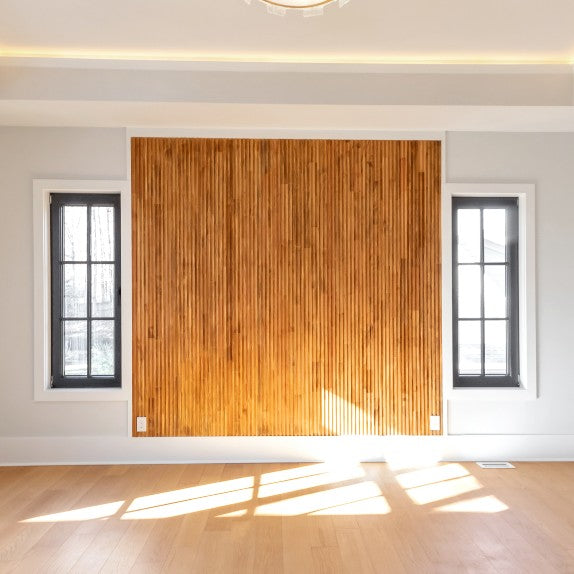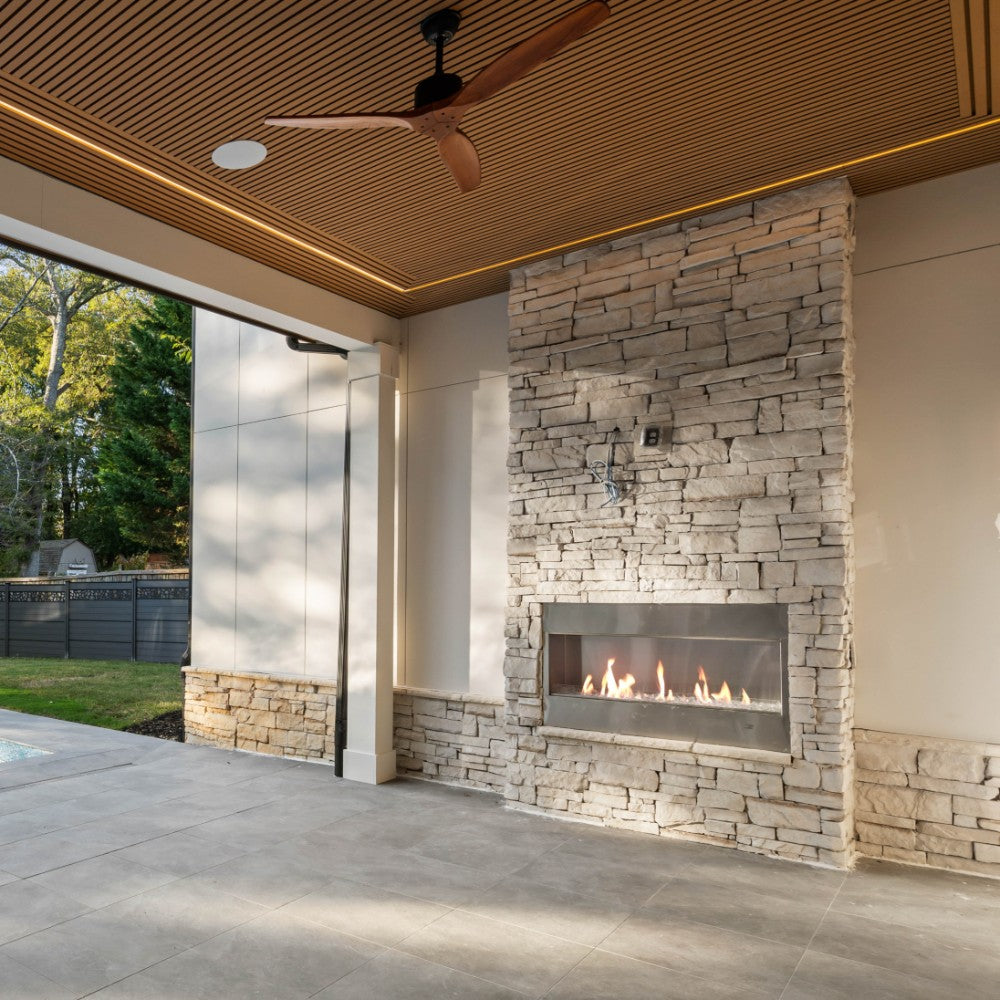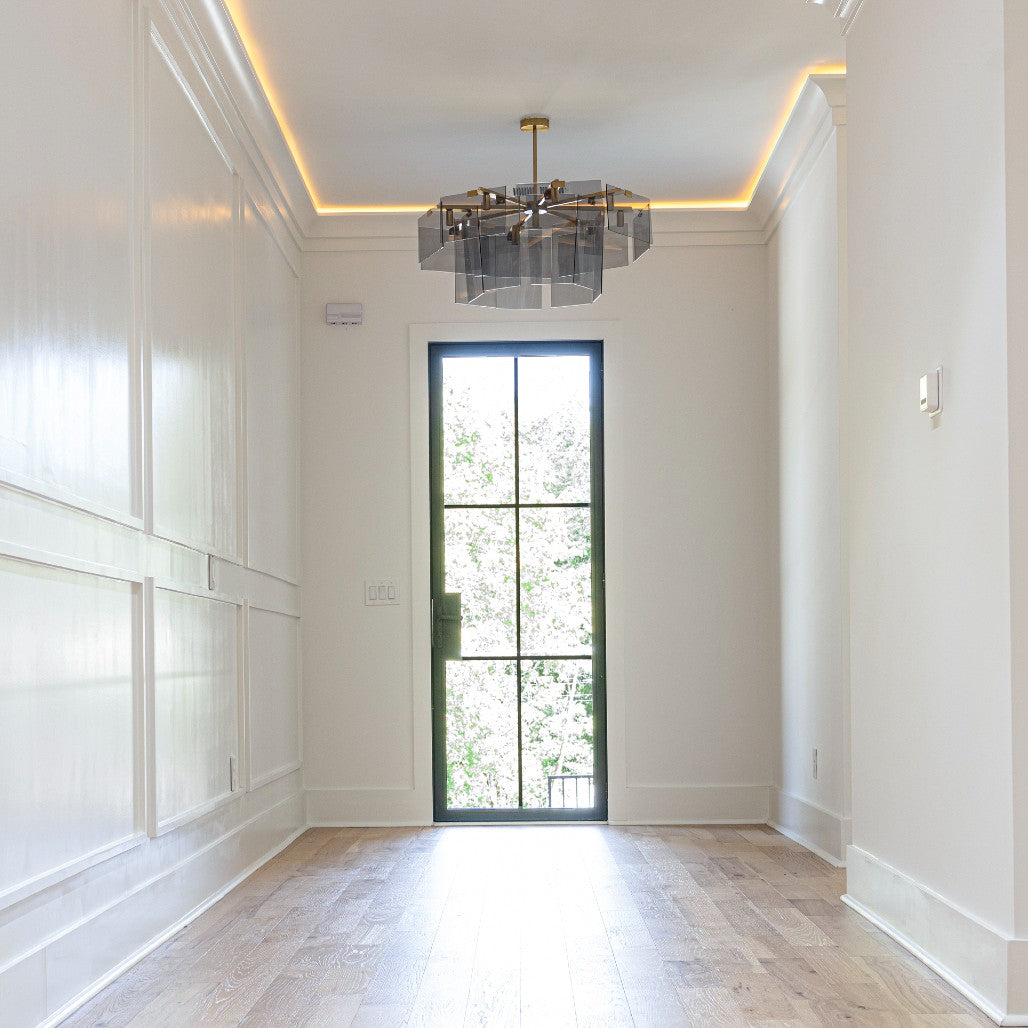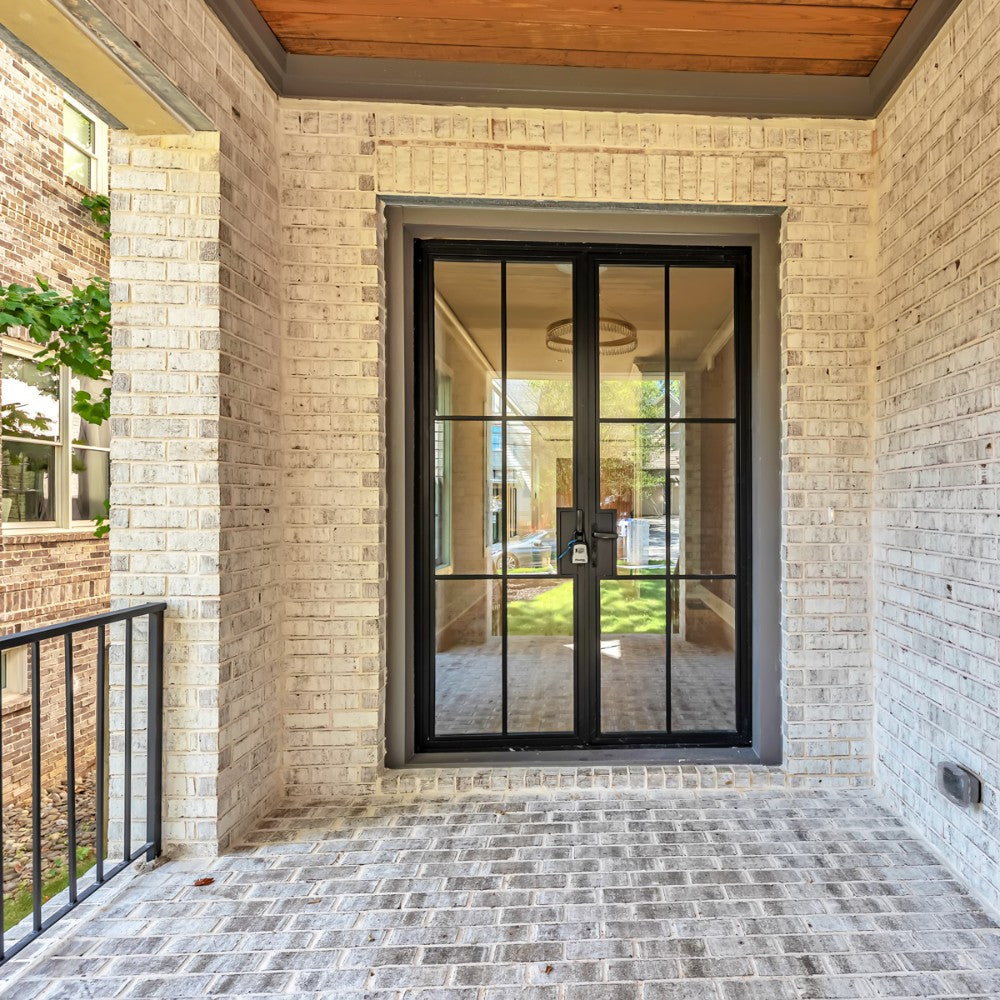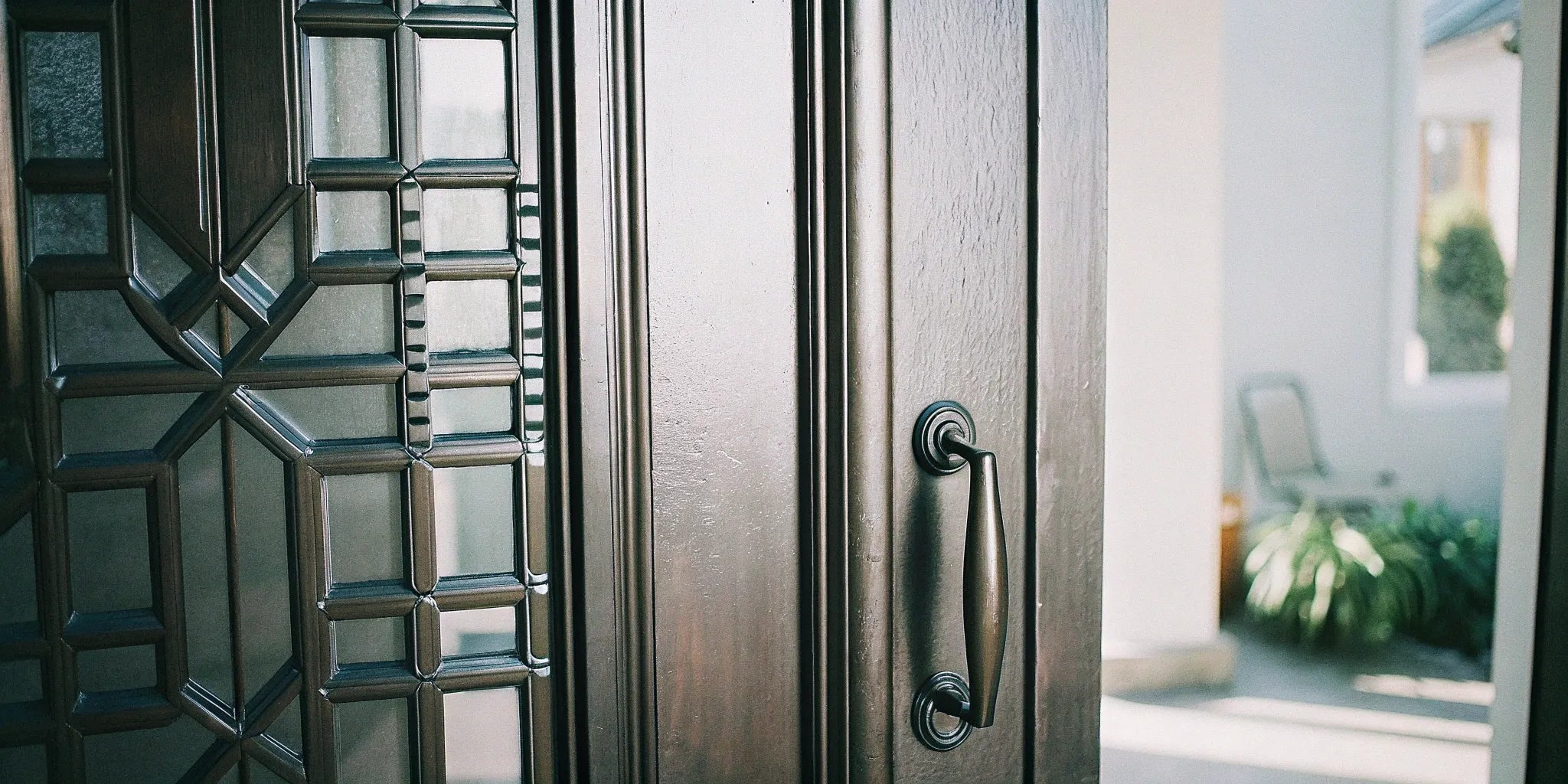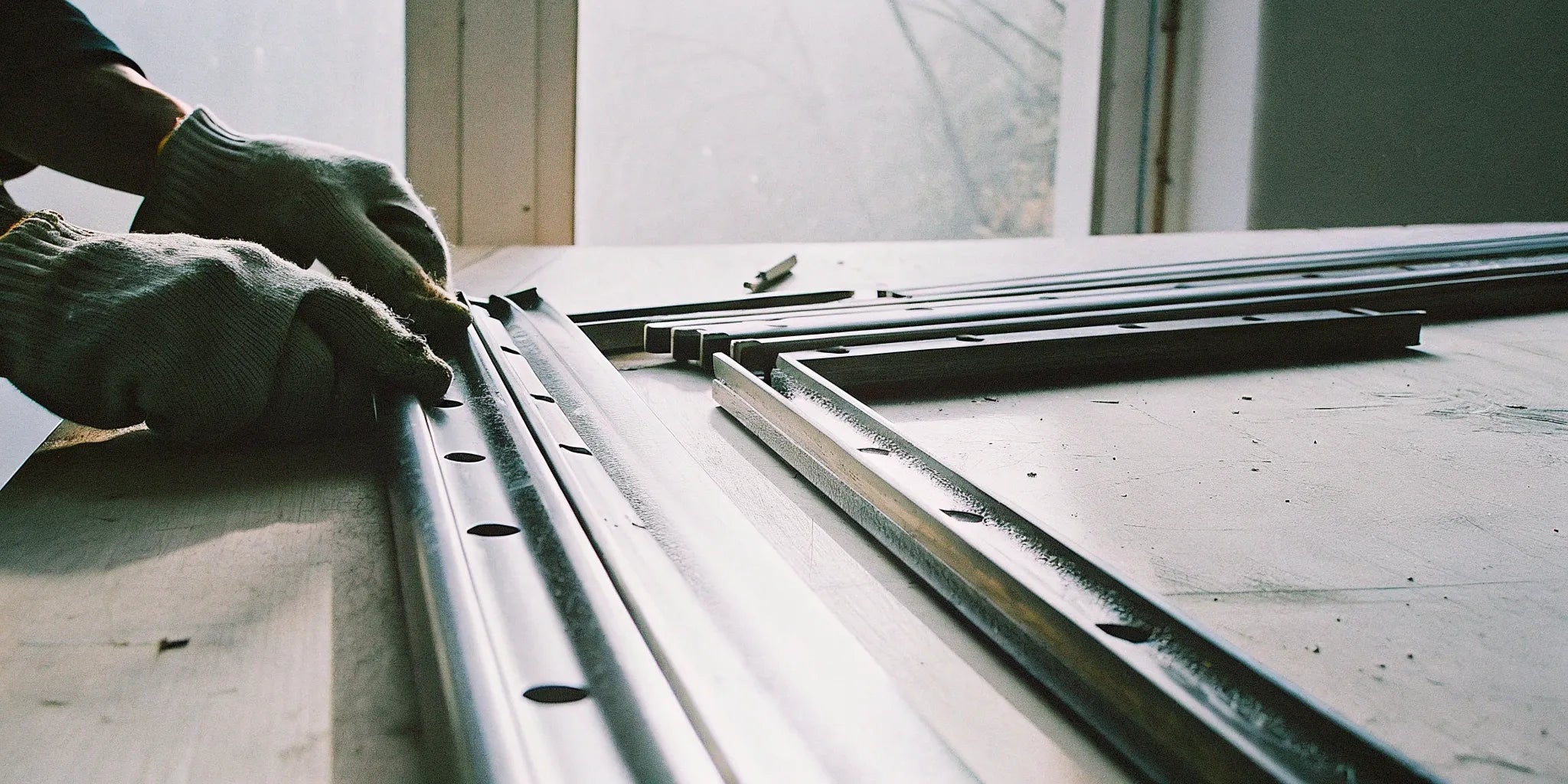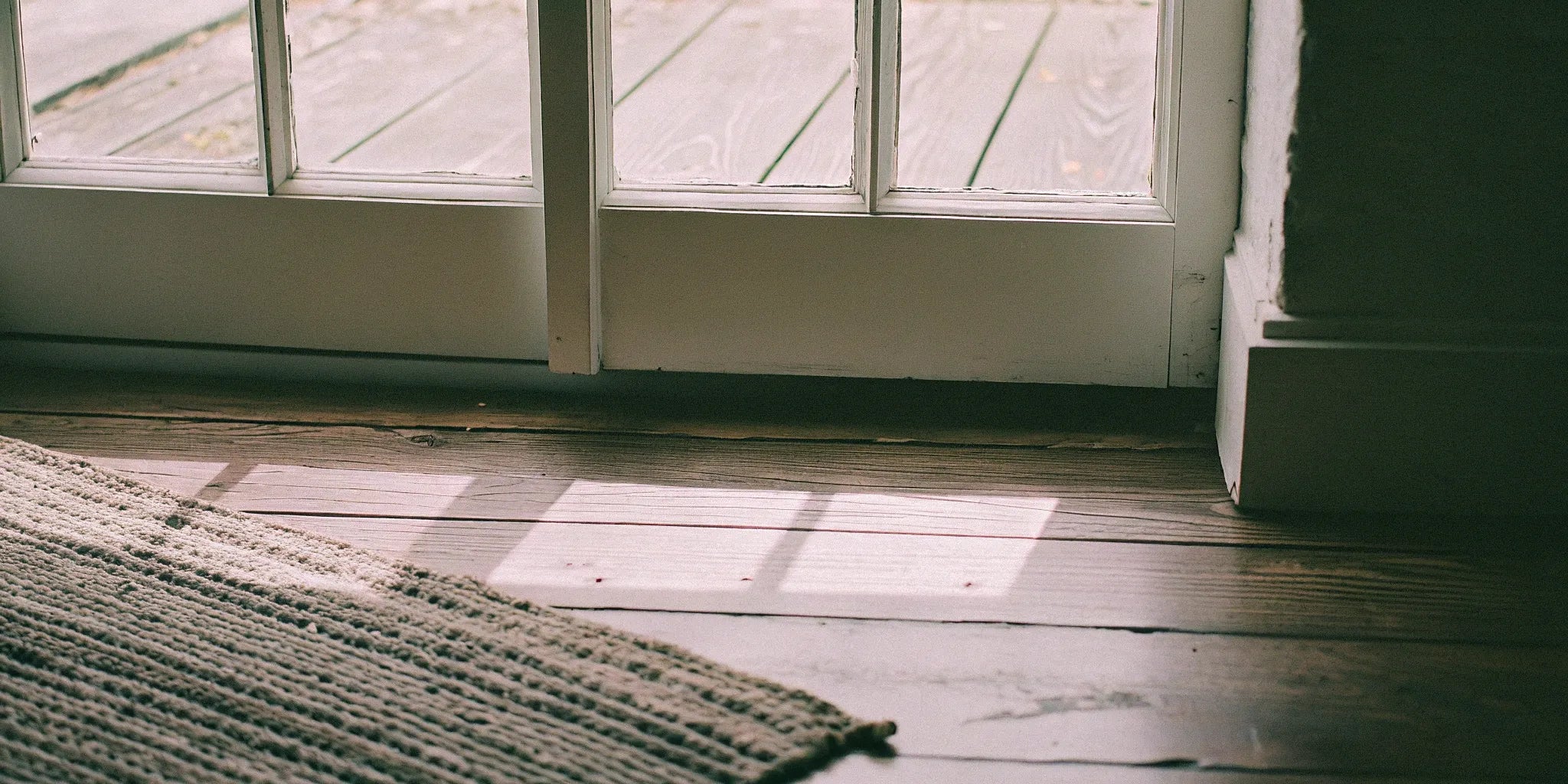
Farmhouse Wide Plank 101: The Ultimate Guide
Heard some horror stories about wide plank floors? You love the warm, rustic look, but concerns about warping, cupping, and seasonal gaps are enough to make anyone hesitate. Let's set the record straight: those were yesterday's problems. Modern manufacturing has completely changed the game. Today’s high-quality farmhouse wide plank flooring, whether solid or engineered, is built for incredible stability and durability. This guide is here to bust those outdated myths. We'll give you the clear, straightforward information you need to choose, install, and maintain your new floors with confidence.
Key Takeaways
- Prioritize Plank Width and Natural Details: The signature farmhouse look comes from wide planks (6+ inches) that create a spacious, uncluttered feel. Choose wood with visible grain and knots to add authentic character and warmth to your foundation.
- Match Your Flooring Type to Your Home's Needs: Consider your home's environment when choosing between solid and engineered hardwood. Engineered planks offer superior stability in humid areas, while solid wood provides the long-term benefit of being refinished multiple times.
- Invest in Professional Installation for Lasting Results: Wide plank flooring requires precise installation to prevent future issues like gapping or cupping. Hiring a professional and allowing the wood to acclimate to your home's climate are essential steps to protect your floor for years to come.
What Is Farmhouse Wide Plank Flooring?
Farmhouse wide plank flooring is all about creating a warm, inviting, and authentic atmosphere in your home. It’s a style that feels both timeless and grounded, drawing inspiration from historic farmhouses where floors were crafted from long, wide boards milled from old-growth trees. This type of flooring is defined by its generous plank widths, which showcase the natural beauty, grain, and character of the wood. Unlike standard, narrow-strip flooring that can look busy, wide planks create a sense of calm and spaciousness. They serve as a beautiful, rustic foundation that complements a range of decor styles, from traditional country to modern minimalist. Choosing this flooring is less about following a trend and more about investing in a classic look that adds enduring character and value to your space. It’s the perfect way to bring a touch of natural, rustic elegance into any room.
How Wide is "Wide Plank" Flooring?
So, what exactly makes a plank "wide"? While there’s no single industry standard, wide plank flooring generally refers to boards that are at least 6 inches across, though they can extend up to 20 inches or even more. This is a significant step up from the typical 2- to 3-inch strips you see in many homes. The broader width is what gives this flooring its distinctive, old-fashioned charm. With fewer seams breaking up the visual flow, the floor feels more unified and expansive. This style harkens back to a time when builders used the widest boards they could get from a tree, resulting in a floor that feels solid, substantial, and deeply connected to its natural origins.
Find Your Favorite Wood and Finish
One of the best parts of choosing farmhouse flooring is the incredible variety of woods and finishes available. You can find beautiful hardwood flooring options to suit any taste. Oak, both red and white, is a classic choice known for its durability and prominent grain patterns. Hickory is another popular option, prized for its strength and rich color variations. For a softer, more rustic look, many people turn to Pine, which develops a lovely patina over time. Other great choices include Maple, Walnut, and Birch. Finishes range from smooth and modern to hand-scraped and distressed, which enhances the wood’s texture and gives it a perfectly imperfect, lived-in feel right from the start.
How to Get the Perfect Farmhouse Look
The key to achieving that perfect farmhouse look lies in embracing the natural character of the wood. This style is all about authenticity, so you’ll want to look for flooring that highlights organic features like knots, mineral streaks, and distinctive grain patterns. A slightly weathered or time-worn appearance adds to the charm, making the space feel cozy and welcoming. The combination of natural materials, wide planks, and a finish that celebrates imperfection is what truly defines the farmhouse aesthetic. It’s not about creating a flawless, uniform surface; it’s about building a foundation with warmth, history, and personality that makes your house feel like a home.
Modern vs. Traditional Farmhouse Finishes
The farmhouse style isn't one-size-fits-all; it splits into two main paths: traditional and modern. Traditional farmhouse flooring embraces a truly rustic feel with rough, distressed, or hand-scraped textures that look like they’ve been around for generations. It’s all about that lived-in, cozy charm. On the other hand, the modern farmhouse look is a bit more refined. It blends that country hominess with sleek, clean lines you might find in a city loft. For this style, you’ll want to choose wood with a smooth or lightly wire-brushed finish. This gives you the warmth of wood without the heavy distressing, creating a look that’s both comfortable and chic.
Mixing Plank Widths for Visual Interest
Playing with the width of your floorboards can completely change the atmosphere of a room. For a truly authentic and traditional feel, try mixing different plank widths in common areas like the kitchen, hallways, or family room. This variation breaks up the uniformity and adds a layer of visual texture that feels custom and cozy. It mimics the way floors were laid in historic homes, using every part of the tree. If you have more formal spaces, like a dedicated dining room or a quiet sitting area, using planks of a single, uniform width can create a more streamlined and polished look. This simple design choice allows you to tailor the feel of each space to its specific function.
Using Patterns like Herringbone and Chevron
If you want to add an extra touch of personality to your farmhouse floors, consider laying the planks in a pattern. Designs like herringbone or chevron can introduce a sophisticated element without straying from the rustic aesthetic. These zigzag patterns are fantastic for creating a focal point in a room or defining a specific area, like an entryway, mudroom, or even a kitchen. A hardwood floor laid in a herringbone pattern is not only visually striking but also incredibly durable, making it a practical choice for high-traffic zones. It’s a great way to put a unique spin on a classic style, adding a bit of unexpected elegance to your home’s foundation.
How Wide Planks Can Transform Your Space
The impact of wide plank flooring on a room is immediate and impressive. Because there are fewer seams, the floor appears less cluttered and more continuous, which has the wonderful effect of making any space feel larger and more open. The broad surface of each plank provides a bigger canvas to display the wood's natural grain and beauty, turning your floor into a true design feature. This clean, uninterrupted look creates a serene and uncluttered foundation that allows your furniture and decor to shine. Whether you’re renovating a small cottage or designing a large, open-concept living area, wide planks can help you create a sense of scale and simple elegance that’s hard to achieve with narrower boards.
Faster Installation and Lower Labor Costs
Beyond their stunning appearance, wide plank floors offer a practical advantage that can make a real difference in your project budget: a faster, more efficient installation. Because each individual plank covers more surface area, your installer can lay the floor in less time compared to working with standard narrow strips. This efficiency directly translates into lower labor costs, which can be a significant portion of any flooring project. Choosing wide plank hardwood flooring allows you to achieve a high-end, expansive look while also being a cost-effective decision. It’s a smart way to stretch your renovation budget without compromising on the quality or style of your home’s foundation, getting you to the finish line sooner.
Easier Cleaning and Maintenance
One of the most appreciated benefits of wide plank flooring is how simple it is to maintain. The secret lies in the reduced number of seams. With fewer joints between the boards, there are far fewer places for dust, crumbs, and dirt to get trapped. This creates a smoother, more uniform surface that is incredibly easy to sweep or vacuum, simplifying your cleaning routine. This feature not only helps keep your home looking tidy with minimal effort but also contributes to a healthier living environment. You can spend less time worrying about deep cleaning crevices and more time enjoying the beautiful, open aesthetic of your floors, a practical perk that every homeowner can appreciate.
How to Choose the Best Farmhouse Wide Plank Floor
Once you’ve decided that wide plank flooring is the right fit for your farmhouse vision, the fun part begins: picking the perfect boards. This decision comes down to balancing your personal style with practical needs like durability and budget. Thinking through the wood species, construction type, and finish will help you land on a floor you’ll love for years. Let’s walk through the key choices you’ll need to make.
A Look at Different Wide Plank Styles
The magic of wide plank flooring lies in its ability to create a clean, uninterrupted surface that makes any room feel more spacious and open. Because there are fewer seams than in traditional narrow-strip flooring, the eye is drawn to the natural beauty and grain of the wood itself. Our hardwood flooring collections are curated to showcase this effect, offering a range of styles from rustic and character-filled to sleek and modern. Take some time to browse the different options and see how the width and finish of the planks can completely transform a space.
The Timelessness of Wide Plank Flooring
While design trends can be fleeting, wide plank flooring is a classic that has stood the test of time. Its history stretches back centuries, especially in early American homes where builders used the widest, most substantial boards available. This enduring appeal comes from its ability to make a room feel more open and connected. With fewer seams breaking up the visual flow, the space feels more unified and expansive. This style also puts the spotlight on the wood’s natural beauty, showcasing more of its unique grain, knots, and character. Choosing wide plank flooring isn’t about chasing a trend; it’s about investing in a timeless foundation that brings an authentic, old-fashioned charm to your home that will never feel dated.
Current Trends in Colors and Finishes
While the style itself is timeless, current trends in colors and finishes can help you tailor the look to your personal taste. Right now, there’s a strong movement toward lighter, more natural wood tones. Finishes like whitewashed, pale natural, and light gray are incredibly popular because they make rooms feel brighter and more airy. When it comes to sheen, matte and satin finishes are the top choices over high-gloss options. These low-sheen finishes do a better job of hiding minor scratches and scuffs, and they allow the wood's natural texture to take center stage without any distracting glare. This combination of light colors and subtle finishes creates a serene, organic foundation that perfectly complements the modern farmhouse aesthetic. You can explore a variety of these on-trend options in our hardwood flooring collection.
Who Makes the Best Wide Plank Flooring?
Wide plank flooring is not just a passing trend; its timeless appeal fits well with many home styles, including modern, traditional, and rustic. Different manufacturers bring their own unique touch to their products, offering distinct finishes, textures, and durability features. Some specialize in hand-scraped, distressed looks perfect for a classic farmhouse, while others offer smooth, matte finishes that lean more contemporary. Comparing brands helps you understand the warranties, quality grades, and specific color palettes available, ensuring you find the perfect match for your project’s aesthetic and performance requirements.
Which Wood Species Is Right for You?
The type of wood you choose is one of the biggest factors in your floor’s final look and feel. Common wood species for wide plank flooring include Oak, Hickory, Maple, and Walnut, each offering unique aesthetics and durability. Oak is a classic choice known for its prominent grain and toughness. Hickory is even harder and often features dramatic color variations, while Maple provides a lighter, more uniform look. For a touch of luxury, Walnut offers deep, rich chocolate tones. Your choice will impact everything from scratch resistance to how the wood accepts a stain, so consider both the style and the demands of your household.
Why White Oak is a Top Choice
When it comes to farmhouse flooring, White Oak is a consistent favorite for good reason. Its lighter, neutral colors are perfect for creating a space that feels both brighter and bigger. Beyond its beautiful appearance, White Oak is incredibly practical. It's a durable hardwood with a fine, straight grain that offers a clean, classic look without being too busy. Plus, it resists moisture well, which makes it a fantastic choice for high-traffic or spill-prone areas like kitchens and entryways. This versatility extends to finishing—White Oak takes stain beautifully, allowing you to customize the color to perfectly match your home’s decor, whether you prefer a natural, light wash or a deeper, richer tone. It’s a reliable and stylish foundation for any farmhouse-inspired design.
The Eco-Friendly Appeal of Reclaimed Wood
For a floor that tells a story, nothing compares to reclaimed wood. Choosing reclaimed planks is an eco-friendly decision that gives new life to timber from old barns, warehouses, and other historic structures. This approach not only reduces waste but also gives you a floor with unmatched character. Reclaimed wood comes with a built-in history, showcasing unique details like nail holes, saw marks, and a deep, rich patina that can only be earned with time. These imperfections are what make it so beautiful, adding a layer of authenticity and rustic charm to your home. Often sourced from old-growth trees, this wood is also exceptionally dense and durable, making it a strong and sustainable choice for your farmhouse flooring.
Engineered vs. Solid Wood: What's the Difference?
You’ll need to decide between solid and engineered hardwood. Solid planks are milled from a single piece of timber, while engineered flooring pairs a genuine hardwood surface with a stable, layered core. This construction makes engineered planks more resistant to humidity and temperature changes, so they’re less prone to warping than solid hardwood. This makes them a great choice for basements or homes in humid climates. While solid wood can be sanded and refinished more times over its lifespan, high-quality engineered wide plank flooring offers incredible stability and a durable finish that lasts for decades.
Common Wide Plank Flooring Myths, Busted
Some people worry that wide plank floors are more likely to have problems than standard flooring, but many of these fears are based on outdated information. One of the most common misconceptions is that any plank over five inches wide will cup or warp. In reality, cupping is a result of moisture imbalance and improper acclimation, not plank width. High-quality modern flooring, whether solid or engineered, is manufactured to remain stable when installed correctly. By following proper installation guidelines and choosing a quality product, you can confidently avoid common issues and enjoy a beautiful, stable floor for a lifetime.
Budgeting for Farmhouse Wide Plank Flooring
Creating a budget is the first, and arguably most important, step in any flooring project. It’s the roadmap that guides your decisions and helps you avoid costly surprises down the line. A well-planned budget ensures you can get the beautiful farmhouse look you want without the financial stress. When you start mapping out the costs, think beyond just the price per square foot of the wood. You’ll also need to account for underlayment, adhesives, delivery fees, and the cost of labor if you’re hiring a professional.
It’s also helpful to build a small cushion—around 10% to 15% of your total budget—for unexpected expenses. A little extra planning on the front end makes the entire process smoother, from selecting your materials to enjoying the final result. While wide plank flooring is an investment, its timeless appeal and durability add significant long-term value to your home. Exploring different hardwood flooring options will help you find the perfect match for both your style and your budget.
How Wood Type Affects Your Cost
The type of wood you choose is the single biggest factor that will influence your material costs. Prices can range from budget-friendly to premium, depending on the species, grade, and finish. For example, you might find some rustic collections priced between $8 and $20 per square foot. Common options like oak and maple are often more affordable, while more exotic or reclaimed woods will sit at the higher end of the spectrum. Take some time to compare different wood species, weighing their aesthetic appeal against their price point to find a beautiful floor that fits comfortably within your budget.
Don't Forget Installation Costs
Once you’ve chosen your flooring, the next major cost to consider is installation. While a DIY installation can save money, wide plank flooring requires precision to get right. Professionals have the tools and experience to handle challenges like uneven subfloors and ensure a tight, seamless fit. The best method often involves applying adhesive and blind nailing the boards, a technique that guarantees a stable, long-lasting floor. We always recommend getting quotes from at least three certified installers in your area. This allows you to compare prices and find a trusted professional for the job.
Why Wide Plank Flooring Is a Great Investment
It’s easy to see flooring as just another expense, but it’s truly an investment in your home’s value and appeal. High-quality wide plank flooring has a classic, high-end look that can make your home more attractive to potential buyers and increase its resale value. It’s a feature that adds character and a sense of craftsmanship that you just don’t get with other flooring types. The durability of solid hardwood means it will last for decades with proper care, making it a smart, long-term choice for your home. Our customers consistently tell us how new floors have completely transformed their space, which you can see in their reviews.
How to Find Deals on Quality Flooring
Getting a great floor doesn’t have to mean overspending. To maximize your budget, it pays to shop smart. Look for suppliers that offer competitive pricing on high-quality materials. Keep an eye out for seasonal sales or promotions that can help you save on costs. If you’re a contractor or designer, see if your supplier offers a trade program. For example, our trade application gives professionals access to bulk discounts. Also, be sure to factor in shipping costs, as some companies offer free shipping on qualifying orders, which can lead to significant savings.
Your Step-by-Step Flooring Budget Plan
Now it’s time to pull everything together into a smart, simple budget. A basic spreadsheet is a great tool for this. Create line items for each expected cost: materials (including extra for cuts and mistakes), underlayment, delivery, installation labor, and your contingency fund. Getting everything down on paper gives you a clear picture of the total investment. Remember, this planning pays off. Wide plank flooring is popular for a reason—its wide boards create an open, rustic feel and can even make smaller rooms appear more spacious. A clear budget is your first step toward achieving that beautiful, transformative look.
Your Guide to Installation and Long-Term Care
You’ve picked out the perfect wide plank floors—now it’s time to make sure they look amazing for years to come. Proper installation and a little routine care are all it takes to protect your investment and keep that farmhouse charm shining through. Getting the installation right from the start is the most important step you can take to prevent issues like gapping or cupping later on. Once your floors are in, a simple maintenance routine will keep them looking as beautiful as the day they were installed. From deciding between a pro and a DIY job to knowing the right way to clean up spills, here’s everything you need to know to get it right.
Pro vs. DIY: Which Is Right for You?
While the satisfaction of a DIY project is tempting, installing wide plank flooring is a job best left to the professionals. Because the boards are so wide, they require a specific technique to prevent gapping, cupping, and other issues down the road. It’s a tricky process that demands a skilled hand, especially if you’re working with reclaimed planks. For most homeowners, hiring a seasoned installer is the smartest move to ensure a flawless finish. If you’re a contractor, you can join our trade program to get exclusive access and pricing on our flooring collections.
Why Professional Installation is Often Necessary
While it might seem straightforward, laying down wide planks is a different ballgame than working with standard narrow strips. The generous width of each board requires a much higher level of precision to prevent future issues like gapping or cupping. A professional installer understands the specific techniques needed to secure these larger boards, ensuring they remain flat and stable for decades. They also know how to properly acclimate the wood to your home’s specific climate—a critical step that’s often overlooked in DIY projects. Hiring a pro isn’t just about convenience; it’s about protecting your investment and guaranteeing a beautiful, long-lasting result that you’ll be happy with for years to come.
Your Pre-Installation Checklist
A great installation starts with a well-prepared space. Before your new floors go in, your subfloor needs to be clean, dry, and perfectly level. Most importantly, the wood planks need to acclimate to your home’s environment. This means letting them sit in the room where they’ll be installed for several days to adjust to the temperature and humidity. This simple step prevents the wood from shrinking or expanding after it’s laid. Professionals often use a combination of adhesive and blind nailing to secure the boards, a method that provides the most stable and long-lasting result for your hardwood flooring.
Factoring in Sourcing and Lead Times
Beyond preparing your subfloor, a smooth installation depends on smart project timing, and that starts with sourcing your materials. Once you’ve made a decision, it’s important to remember that your flooring might not be available for immediate pickup. Factoring in shipping and delivery lead times is essential to keep your project on track and avoid costly delays with your installer. We recommend ordering your materials well in advance of your planned installation date. This not only ensures your chosen hardwood flooring arrives on time but also gives the planks the several days they need to acclimate properly inside your home. Planning for this entire timeline—from ordering to acclimating—is a simple step that prevents a lot of stress down the road.
Why Climate and Moisture Matter for Your Floors
Wood is a natural material that responds to its environment, and wide planks are especially sensitive to changes in humidity. They tend to expand in humid weather and shrink when the air is dry. This movement can sometimes lead to cupping, where the edges of the board are higher than the center. If you live in an area with dramatic climate shifts, engineered wide plank flooring is a fantastic, more stable alternative. Maintaining a consistent indoor humidity level with a humidifier or dehumidifier can also go a long way in keeping your solid wood floors flat and beautiful.
The Role of Kiln-Drying in Wood Stability
To prevent issues like warping and cupping, quality wood flooring goes through a process called kiln-drying. It’s a critical step where manufacturers dry the wood in a controlled environment to reduce its moisture content to a stable level. Wood that hasn't been properly dried will continue to lose moisture after it's installed in your home, causing it to shrink and shift. Kiln-drying removes that excess moisture from the start, creating a far more stable product that stays flat and secure. This modern manufacturing step is a key reason you can confidently choose wide planks without worrying about the stability problems of the past, as long as you follow proper installation guidelines.
How to Keep Your Floors Looking New
Maintaining your farmhouse floors is simpler than you might think. The key is consistency. Regular sweeping or vacuuming with a soft-bristled attachment will prevent dirt and grit from scratching the surface. For cleaning, always use a pH-neutral cleaner designed specifically for wood floors—never use water and vinegar, soap-based detergents, or steam mops. Place felt pads under all furniture legs to prevent scuffs, and wipe up spills immediately with a soft, dry cloth. With just a little routine care, you can keep them looking good for a lifetime.
Is It Time to Refinish Your Floors?
One of the best things about solid hardwood flooring is that it can be refinished, giving it a fresh life every decade or so. You’ll know it’s time when the finish looks dull or you see widespread scratches and wear that cleaning can’t fix. Refinishing involves sanding down the top layer to remove the old finish and any surface-level damage, then applying a new coat of stain and sealant. While some engineered floors can be refinished once or twice, solid wood can be sanded down multiple times, making it a truly sustainable and long-term investment in your home’s beauty and value.
What to Know Before You Buy Your Flooring
Choosing the right flooring feels like a huge decision because it is—it sets the tone for your entire home. But it doesn’t have to be overwhelming. When you know what to look for, you can confidently select a floor that fits your budget, lifestyle, and vision. Thinking through a few key areas before you buy will help you find the perfect wide plank flooring that you’ll love for years to come. It’s all about balancing aesthetics with practicality to make a choice that’s both beautiful and built to last.
What to Look For When Buying Wide Plank Floors
When you’re browsing different hardwood flooring options, pay attention to the details. The most obvious feature of wide plank flooring is, of course, the width. Wider boards mean fewer seams, and as USA Builders' Depot notes, this "uses fewer, broader boards to create a clean, uninterrupted surface, which can enhance the aesthetic appeal of your home." Also, consider the finish—a matte finish can hide minor scratches and feels more rustic, while a satin or semi-gloss finish offers a subtle sheen that’s easier to clean. The edge style, whether beveled or square, also contributes to the final look, creating either distinct plank definition or a more seamless surface.
How to Choose a Floor That Fits Your Lifestyle
Your floor needs to stand up to your daily life, whether that involves kids, pets, or just a lot of foot traffic. The type of wood and its construction play a big role here. For busy households, engineered flooring is an excellent option. As we explain in our guide, "Engineered flooring pairs a genuine hardwood surface with a stable, layered core that resists humidity and wear, making it a practical choice for high-traffic areas." This layered construction makes it less prone to expanding and contracting with temperature changes. For solid hardwood, look at the Janka hardness rating—the higher the number, the more resistant the wood is to dents and dings.
How to Choose Sustainable Flooring
Making a sustainable choice is important to many homeowners. The good news is that wood is a renewable resource, and you can find environmentally friendly options. According to AA Floors, "Wide plank wood flooring is popular because it looks old-fashioned and rustic, and it can also be a sustainable choice if sourced from responsibly managed forests." Look for products certified by organizations like the Forest Stewardship Council (FSC), which ensures the wood comes from forests that are managed in an environmentally and socially responsible way. Choosing flooring from a reputable supplier helps ensure you’re making a green choice.
How to Match Flooring to Your Home's Style
The right flooring is the foundation of the farmhouse aesthetic. You want something that feels warm, authentic, and inviting. As Pioneer Floor points out, "Key elements of farmhouse flooring include natural materials, wide planks, and a slightly weathered look that adds character and warmth to any space." Look for woods with natural grain patterns, knots, and a bit of texture. Lighter woods like oak or maple can brighten up a room, while darker tones like hickory or walnut create a cozier, more rustic feel. Don’t forget to consider how the floor will pair with other elements like your wall panels and lighting fixtures.
Will New Flooring Increase Your Home's Value?
New flooring is a significant purchase, but it’s also a smart one. Quality flooring can last for decades and adds tangible value to your property. According to Hartco, "Installing wide plank flooring can make your home more appealing to buyers and increase its resale value, making it a smart investment for homeowners." While the upfront cost might be higher than other options, the longevity and timeless appeal of wide plank hardwood often provide a great return. For contractors and designers, explaining this long-term value to clients is key, and trade professionals can often access bulk pricing to manage project costs through our trade application.
Alternative Flooring for a Farmhouse Aesthetic
While wide plank hardwood is the quintessential choice for a farmhouse look, it’s certainly not your only option. The beauty of this style is its flexibility and focus on natural, durable materials. If wood isn’t the right fit for your budget, climate, or a specific room like a bathroom or mudroom, there are plenty of other materials that capture that same warm, rustic, and inviting spirit. From the earthy appeal of stone and tile to the unique character of brick, you can create a stunning foundation that feels both authentic and personal. Let’s explore some fantastic alternatives that prove you don’t need wood to achieve the farmhouse floor of your dreams.
Stone and Tile Options
For a look that’s both rustic and incredibly durable, consider stone or tile. Materials like slate, travertine, and terracotta bring an organic, earthy texture to a room that pairs beautifully with farmhouse decor. They are perfect for high-traffic areas like kitchens, entryways, and bathrooms where you need something that can handle moisture and heavy use without worry. Modern porcelain tiles offer the best of both worlds, providing the gorgeous look of natural stone with even greater durability and less maintenance. You can find options that mimic everything from aged stone to rustic wood, giving you the flexibility to achieve the exact aesthetic you want with a practical, long-lasting surface.
The Rustic Charm of Brick
Nothing says timeless, rustic character quite like brick. Using brick pavers or thin brick tiles on your floor can instantly create a cozy, lived-in atmosphere that feels like it has been there for generations. The natural variations in color and texture add a unique warmth and visual interest that’s hard to replicate with any other material. Brick is an excellent choice for spaces like mudrooms, sunrooms, or kitchens, where its durability can really shine. It’s a bold choice that makes a statement, grounding your space with an authentic, old-world charm that is central to the farmhouse aesthetic.
Industrial Farmhouse with Polished Concrete
If your style leans a bit more modern, polished concrete offers a fantastic way to blend industrial edge with rustic warmth. This isn't the cold, gray concrete of a garage floor; modern polished concrete can be stained and finished to create a smooth, sleek surface with subtle patterns and depth. It’s incredibly durable, easy to clean, and provides a clean, minimalist backdrop that makes farmhouse elements like reclaimed wood and cozy textiles pop. To keep the space from feeling too stark, you can easily soften the look with large, plush area rugs, adding texture and comfort while maintaining that cool, contemporary farmhouse vibe.
Adding Warmth with Carpet
While it might not be the first material that comes to mind, carpet can absolutely work in a farmhouse setting, especially in bedrooms and living areas where comfort is key. The trick is to choose the right style. Opt for carpets made from natural fibers like wool or sisal, or look for low-pile options in muted, earthy colors like cream, beige, or soft gray. A simple, textured carpet can provide a soft, warm foundation that complements the rustic elements in the room without overwhelming them. It’s the perfect way to add a layer of coziness and sound insulation, making your space feel even more like a relaxing retreat.
Related Articles
Frequently Asked Questions
Is wide plank flooring a good choice for a home with kids and pets? Absolutely. The key is to choose the right wood and finish for your lifestyle. Hardwoods like Oak and Hickory are incredibly durable and can handle plenty of foot traffic. Opting for a finish with a lower sheen, like a matte or satin, is also a great idea because it helps hide minor scratches and scuffs. Many people find that engineered wide plank flooring is an excellent choice for busy households, as its layered construction provides extra stability and durability.
Does engineered wide plank flooring look as authentic as solid hardwood? Yes, it does. High-quality engineered flooring uses a top layer of real, solid hardwood, which means the part you see and walk on is genuine wood. Once installed, it is practically indistinguishable from solid flooring. The primary difference is its core construction, which is designed to be more stable in changing humidity levels. You get the authentic beauty of natural wood with added performance benefits.
Can I use wide plank flooring if my home isn't decorated in a farmhouse style? Of course. While it’s a hallmark of the farmhouse look, wide plank flooring is incredibly versatile. Its clean lines and expansive feel create a beautiful foundation for many different design styles, including modern, minimalist, and traditional homes. The simplicity of the wide boards can make a contemporary space feel warmer or give a classic room a sense of grandeur. It all comes down to the wood species and finish you select.
Why is professional installation so important for wide plank floors? Because the boards are so much wider than standard flooring, they require a more precise installation technique to ensure they remain stable over time. A professional installer knows how to properly acclimate the wood, prepare the subfloor, and use the correct combination of adhesive and fasteners to prevent issues like gapping or cupping. It’s a worthwhile investment to guarantee your beautiful new floors perform perfectly for decades.
What’s the best way to handle minor scratches or scuffs on my new floor? For small, surface-level scratches, a wood repair marker or a wax stick that matches your floor’s color can work wonders. For anything deeper, it’s best to consult a professional. The best strategy, however, is prevention. Placing felt pads under all your furniture, using rugs in high-traffic areas, and keeping pet nails trimmed will go a long way in keeping your floors looking pristine.


